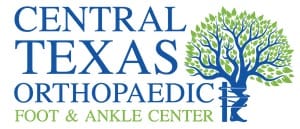Deep Tissue Laser Therapy
About Deep Tissue Laser Therapy

Laser therapy, or photobiomodulation, is the process of photons entering the tissue and interacting with the cytochrome c complex within the cell mitochondria. The result of this interaction, and the point of conducting laser therapy treatments, is the biological cascade of events that leads to an increase in cellular metabolism (promoting tissue healing) and a decrease in pain. Laser therapy is used to treat acute and chronic conditions as well as post-activity recovery. It is also used as another option to prescription drugs, a tool to prolong the need for some surgeries, as well as pre and post-surgery treatment to help control pain.
The procedure is a completely safe and painless process that lasts only 3-10 minutes per treatment session.
Benefits of Deep Tissue Laser Therapy
Deep Tissue Laser Therapy has shown to be effective in treating acute and chronic conditions as well as aiding in post activity recovery.
- Bring pain under control quickly
- Help healing process
- Combat persistant pain
- Promote circulation to damaged tissue
- Reduces pain without the side effects of medication
- Improves post activity recovery time
- Reduces delayed onset of muscle soreness
Treatable Conditions
- TMJ
- Neck Pain
- Shoulder Pain
- Elbow and Joint Pain
- Fibromyalgia
- Low Back Pain
- Sciatia
- Arthritis
- Sports Injuries
- Soft Tissue Damage
- Plantar Fasciitis
FAQs
Laser therapy treatments must be administered directly to skin, as laser light cannot penetrate through layers of clothing. You will feel a soothing warmth as the therapy is administered. Many patients receiving LightForce® Therapy Laser treatments report enjoying the experience, especially when a massage-ball treatment head is used to deliver what is often referred to as a “laser massage.”
Therapy lasers are safe and effective treatment options to reduce musculoskeletal pain due to injury. The biggest risk to injury during laser therapy treatments is to the eye, which is why certified, protective eyewear is always required during LightForce® treatments.
The nature of the condition and the patient’s response to the treatments will play a key role in determining how many treatments will be needed. Most laser therapy plans of care will involve 6-12 treatments, with more treatment needed for longer standing, chronic conditions. Most clinicians will encourage their patients to receive 2-3 treatments per week as the therapy is initiated. doctor will develop a treatment plan that is optimal for your condition.
Patients often report improved sensation, including a therapeutic warmth and some analgesia immediately after the treatment. For noticeable changes in symptoms and condition, patients should undergo a series of treatments as the benefits of laser therapy from one treatment to the next are cumulative.
Laser therapy will not limit a patient’s activities. The nature of a specific pathology and the current stage within the healing process will dictate appropriate activity levels. Laser will often reduce pain which will make it easier to perform different activities and will often help restore more normal joint mechanics. That being said, reduced pain should not overshadow the advice of a medical professional that understands how the laser will fit into a rehabilitation protocol when deciding how aggressively to push functional limits.

